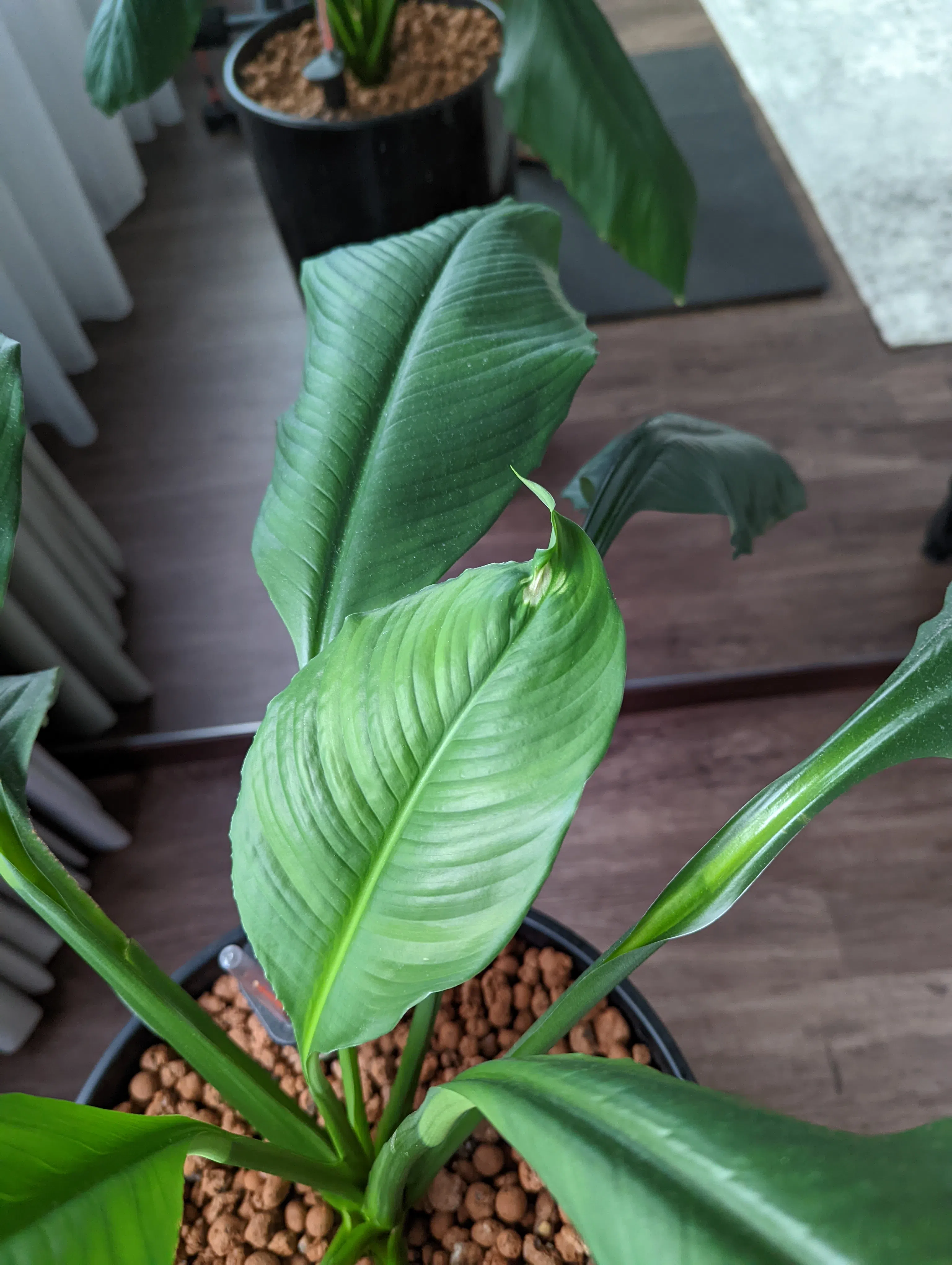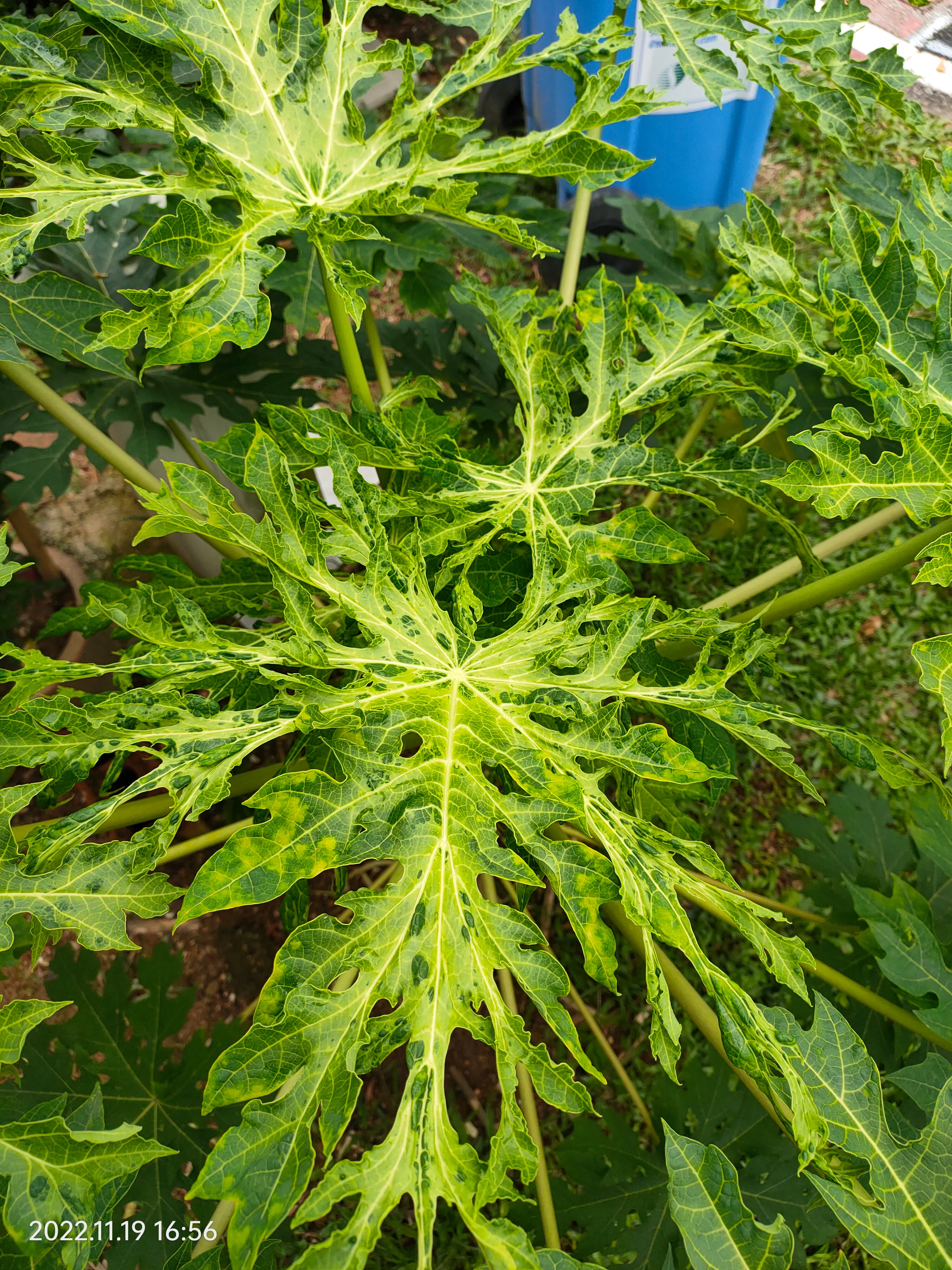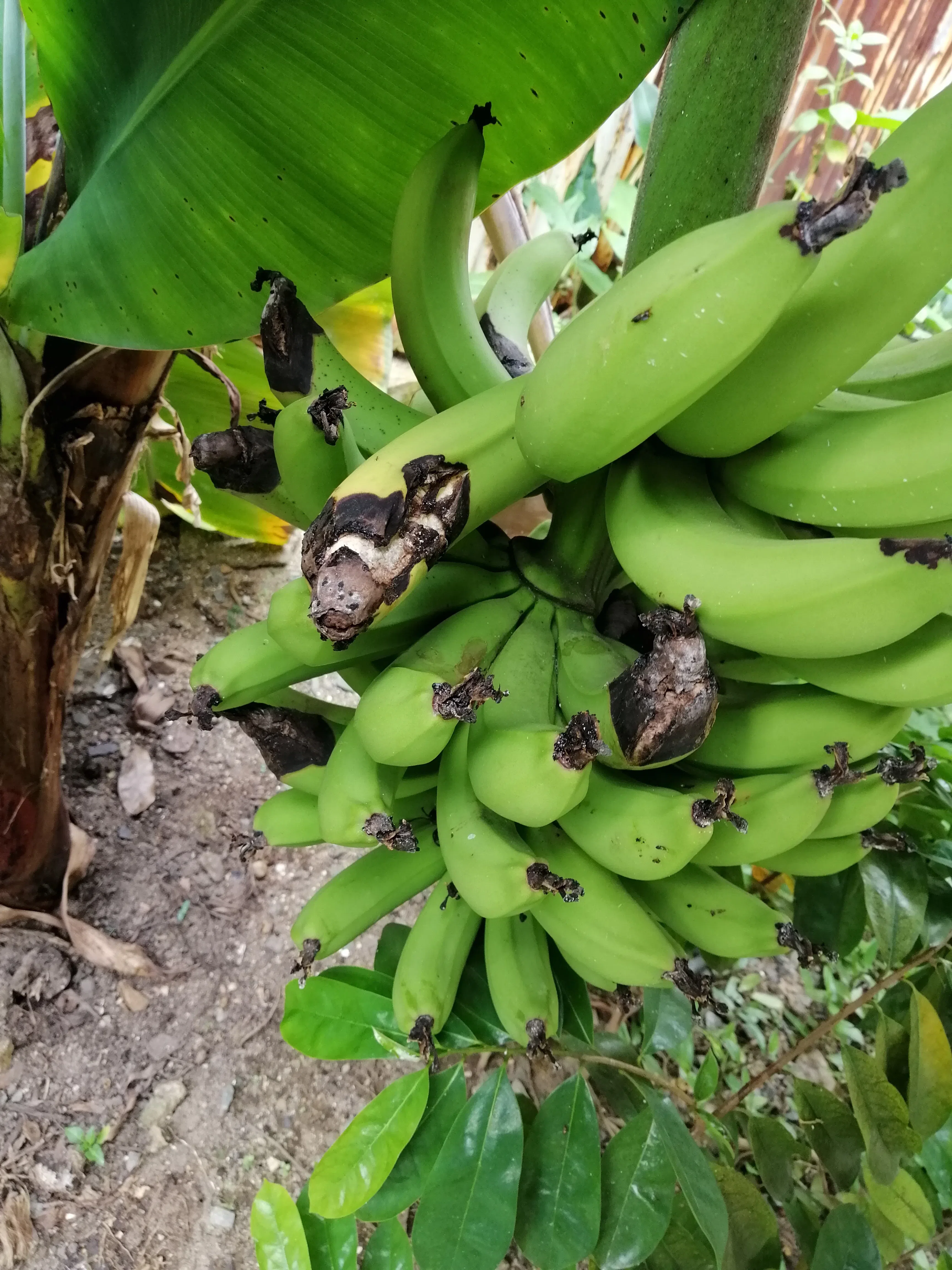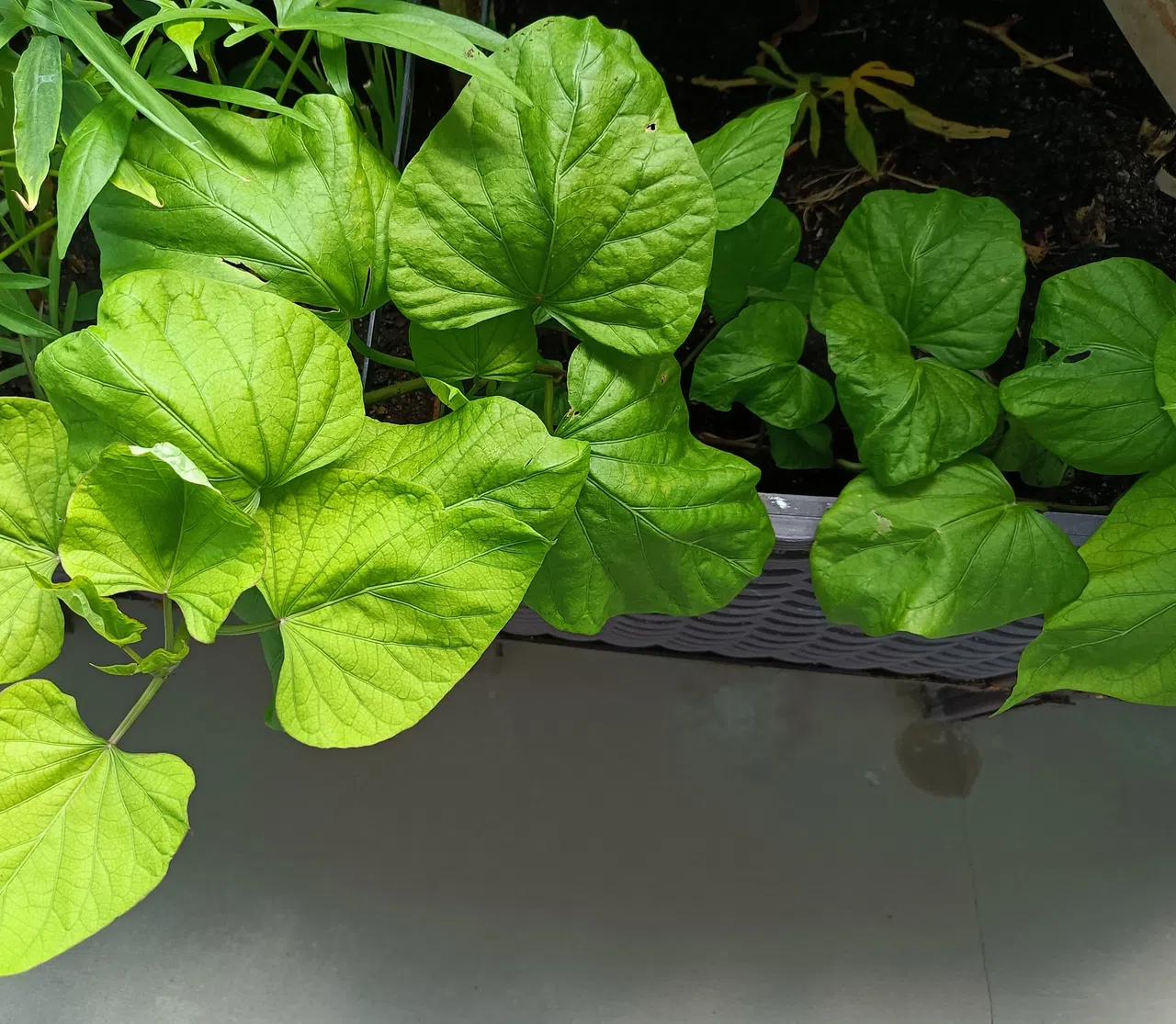Root Awakening: Cabbage tree is a source of timber
Sign up now: Get ST's newsletters delivered to your inbox

This plant is likely the sapling of the cabbage tree.
PHOTO: LEE TAI KHIN
Wilson Wong
Follow topic:
Sapling is the cabbage tree
This plant sprung up in my garden and has grown very fast. What is it and does it have medicinal properties?
Lee Tai Khin
The plant is likely the sapling of the cabbage tree (botanical name: Limahlania crenulata). It can grow up to 20m tall and has a distinct pagoda-shaped crown with a tiered branching habit. The trunk of the young plant is densely covered in spines which are gradually shed as the plant matures. It is a source of timber but has no known medicinal uses.
White spot could be a burnt part of the leaf tissue

Dead tissue in an injured portion of a leaf could prevent surrounding tissue from developing, leading to the leaf becoming distorted.
PHOTO: CHUA ZHAO LONG
A white spot on this leaf seems to be preventing it from unfolding or growing. What is wrong with it?
Chua Zhao Long
The white spot could be a burnt or injured portion of the leaf. The injury could have occurred while the leaf was in the development stage.
Common causes for such injuries could be the young leaf coming into contact with window glass that has been heated by exposure to sunlight or an LED grow light tube.
The injured portion contains dead tissue which prevents the surrounding tissues from developing and expanding properly, hence the distorted shape. It is important to protect a plant’s young, developing leaves from injury.
Papaya plant infected with a viral disease

The mosaic pattern on the leaves of this papaya plant indicates an infection.
PHOTO: CHEN KWEK YONG
My papaya trees are diseased. What is wrong and how can I prevent this from happening again?
Chen Kwek Yong
From the mosaic pattern of the leaves of your papaya plant, it appears that the plant has been infected with a virus. Viral infections in plants cannot be cured, and affected plants should be removed and discarded to reduce the spread of the disease.
Diseases can spread among plants through contaminated cutting tools and sap-sucking insects. Practise garden sanitation and control of potential pest vectors to protect your plants.
Banana plant infected with a fungal disease

The fruit of the banana plant appear to have been infected with a fungal disease.
PHOTO: TAN BOON KENG
I had many good harvests from my banana plant, but recently noticed some fruit have turned black at the end. I sometimes fertilise the soil with used coffee grounds. What is wrong with the plant and when is a good time to harvest the fruit?
Tan Boon Keng
The banana fruit could have been infected with a fungal disease. The causative agent can spread to the developing fruit through soil, rain, injury or a combination of these. Infected fruit should be removed promptly to reduce the spread of the disease.
Whenever you have a new bunch of developing fruit, protect them from the elements by covering them with a clear plastic sleeve. Limit direct handling of the fruit and apply an organic fungicide such as dilute baking soda solution or copper-based fungicide. These work via direct contact and may be washed away by rain, so re-application is often required during the rainy season to provide adequate pest control.
Always adhere to the withholding period, which refers to the time that needs to elapse after fungicide application before harvest can take place safely. Wash the fruit thoroughly before consumption.
Vine is the sweet potato plant

This vine appears to be the sweet potato plant.
PHOTO: SHAWN SEAH
This broad-leafed plant is growing in my planter, but I did not sow its seeds. What is it and is it edible?
Shawn Seah
This vine appears to be the sweet potato plant (botanical name: Ipomoea batatas). Check if someone else planted an underground tuber or stem cutting in your planter. Sweet potato tubers and young leaves are both edible.
Answers by Dr Wilson Wong, an NParks-certified practising horticulturist, parks manager and ISA-certified arborist. He is the founder of Green Culture Singapore and an adjunct assistant professor (Food Science & Technology) at the National University of Singapore.
Have a gardening query? E-mail it with clear, high-resolution pictures of at least 1MB, if any, and your full name to . We reserve the right to edit and reject questions.
Sign up for a free gardening talk by Dr Wilson Wong – Online Gardening Q&A (Jan 28, 2 to 3pm; register at
str.sg/wFV5
).

